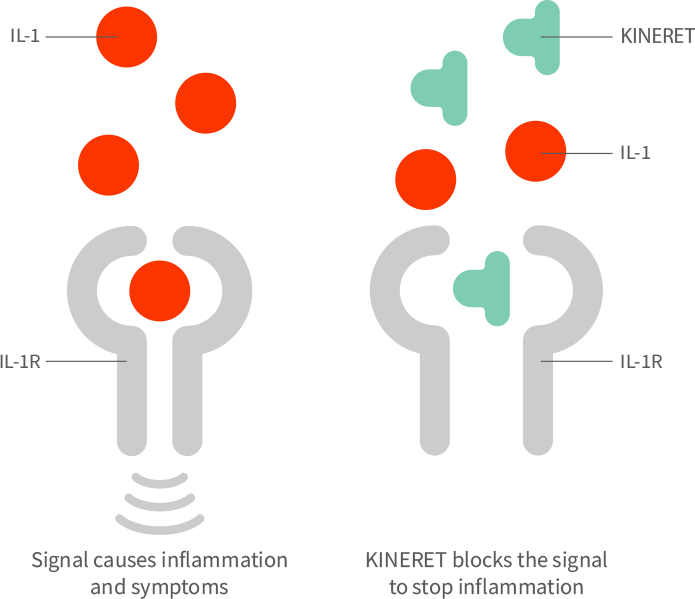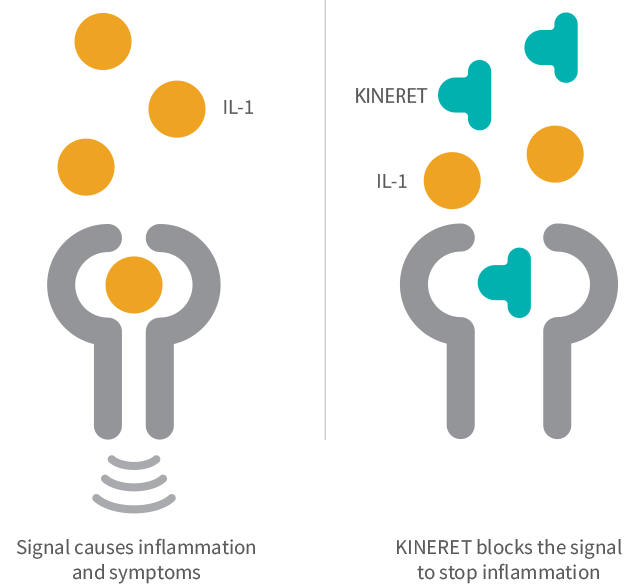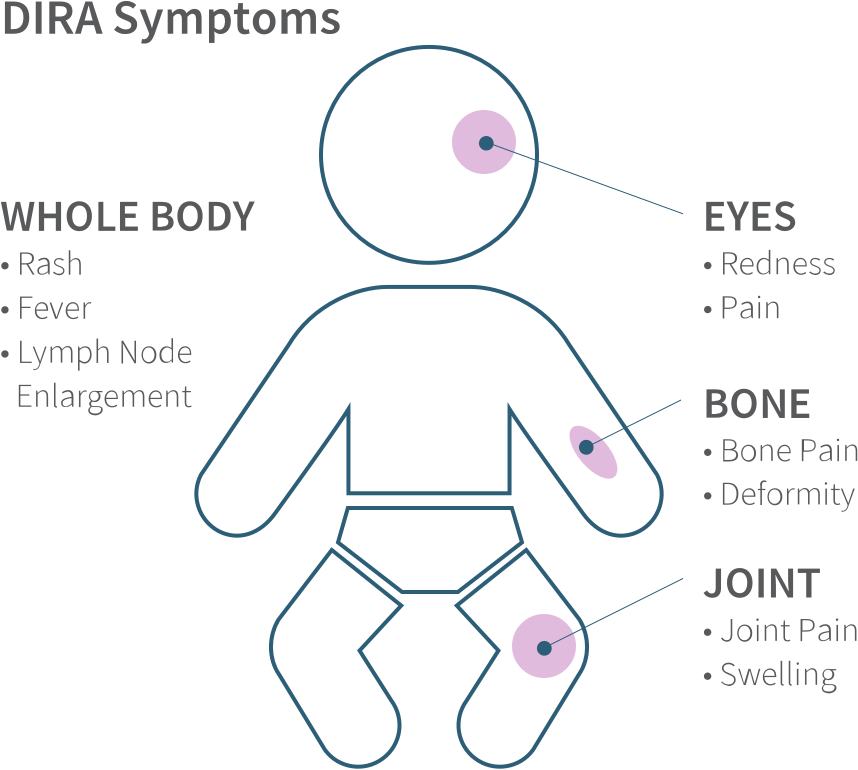Who should not receive KINERET?
You should not receive KINERET if you are allergic to proteins made from bacteria called E. coli or any of the ingredients in KINERET.
What should I tell my healthcare provider before taking KINERET?
You should tell your doctor if you:
- Have an infection, a history of infections that keep coming back, or other problems that can increase your risk of infections.
- Are scheduled to receive any vaccines since people using KINERET should not receive live vaccines.
- Have kidney problems.
- Are pregnant, planning to become pregnant, or breastfeeding. It is not known if KINERET will harm your unborn baby or passes into your breastmilk. You and your healthcare provider should decide if you will use KINERET or breastfeed.
What are the serious side effects of KINERET?
KINERET can lead to serious infections, including tuberculosis (TB). Because KINERET is a medicine that affects your immune system and may lower your risk to fight infection, your doctor may test for TB and treat new or unknown TB, before you start taking KINERET.
You Should Know: Signs and symptoms of a serious infection could include fever, chills, or excessive sweating, open sores on your body, nausea, lightheadedness, or vomiting, dizziness or lightheadedness.
You should tell your healthcare provider or get medical help if new symptoms of an infection appear. They can be life-threatening or cause death.
You should stop using KINERET and call your healthcare provider or get emergency help right away if you have any of these symptoms of an allergic reaction: swelling of your face, lips, mouth, or tongue; trouble breathing; wheezing; severe itching; skin rash, redness, or swelling outside of the injection site area; dizziness or fainting; fast heartbeat or pounding in your chest (tachycardia); or sweating. People with DIRA may have an increased risk of allergic reactions, especially in the first several weeks.
It is not known if treatment with medicines that cause immunosuppression, like KINERET, affect your risk of getting cancer.
KINERET may cause you to have a lower number of certain white cells (neutrophils). Neutrophils are important in fighting infections. You should have blood tests before starting treatment with KINERET, then monthly for 3 months. After the first 3 months you should have your blood tested every 3 months for up to 1 year.
Before taking KINERET, you should tell your healthcare provider about all your medical conditions and medicines including prescription and over-the-counter medicines, vitamins, supplements, and herbal remedies.
What are other possible side effects of KINERET?
The most common side effects of KINERET include injection site skin reactions, worsening RA (if you already have RA), headache, nausea and vomiting, diarrhea, joint pain, fever, general feeling of discomfort, sore throat or runny nose, sinus infection, and pain in your stomach area.
You Should Know: These are not all the possible side effects for KINERET. For more information, ask your healthcare provider or review the Prescribing Information for KINERET at https://www.kineretrx.com/pdf/Full-Prescribing-Information-English.pdf.
If you suspect that you have experienced a side effect, call your healthcare provider. You may also report them to the US Food and Drug Administration (FDA) at 1-800-FDA-1088.
















